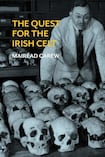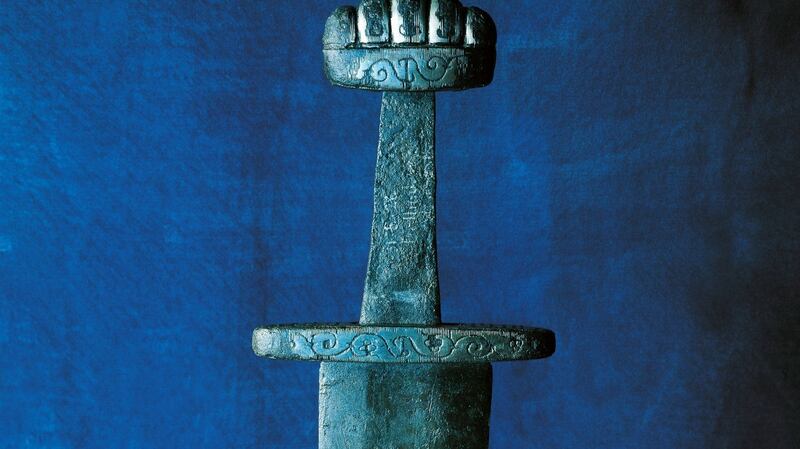
The full story of the development of Irish archaeology in the 20th century has yet to be written but a significant moment in the 1930s is the subject of this wide-ranging study. The Harvard Irish Mission, or the Harvard Anthropological Survey as it was also called, was initiated in 1932 and had three components: a sociological survey mainly focused on a part of Co Clare, a physical anthropological study, and a programme of archaeological excavation. The first of these strands, the investigation of a rural community by two young social anthropologists Conrad Arensberg and Solon Kimball, was published in a celebrated study entitled Family and Community in Ireland. The two other elements are examined by Mairéad Carew and their intertwined story is a convoluted and tortuous mix – not always easily explained – of racial theories, nationalist politics and academic disputes.
The physical anthropological programme involved the study of a representative sample of the population that included monks, travellers, landed gentry, and some members of the Dáil: age, weight, chest dimensions and height were all recorded and detailed measurements were taken of skull shape and size. The human cranium had been considered an important indicator of racial type since the late 18th century and in the following century it became a central ingredient in arguments about racial superiority. Dolicocephalic or long skulls were thought to indicate high intellectual capacity while brachycephalic or short broad skulls were a mark of inferiority. An enormous amount of meticulous measurement was combined with an astonishing volume of unfounded assertion and racial prejudice. Some considered a long skull to be typically Celtic while others argued that the Celts of old happily possessed both long and broad skulls or something in between the two. This cranial index is now discredited for it seems to vary widely between adults of a single group and between generations.
It is not at all surprising that the celticity of a Celtic Ireland should be promoted by the new nationalistically-minded Irish Free State. Even if the label “Celtic” was too widely applied, this was the continuation a centuries-old belief that the “coming of the Celts” was a foundational event in the Irish story. In these circumstances it is equally unsurprising that the Harvard survey should try to identify a Celtic racial element in the modern population and to try to equate ancient and modern skulls with the supposed Celtic invasions of the past and their descendants. Not unexpectedly the results were far from conclusive. As Carew notes, when the results were published in 1955 “the strongest Irish type” identified was a “long-headed, dark-eyed, pure light-eyed Keltic (sic) type” – the word “type” being deliberately employed instead of “race”.

When it came to their archaeological investigations under the direction of Hugh Hencken and Hallam Movius, part of the problem faced by the Harvard mission was the fact that evidence for the supposed Celtic invasions, whether in the form of swords or skulls or anything else, was not to be found in the archaeological record even though it was widely believed at the time that the ancient Celts were a people who spread east and west across a wide area of Europe from a Continental “homeland”. Eoin MacNeill was virtually a lone voice in the early 20th century when he emphasised that “the term Celtic bears a linguistic and not a racial significance”. Of course there were peoples who belonged to a Celtic language family, and Ireland and Britain did become Celtic-speaking at some time in prehistory. However it is now understood that this was a protracted process involving significant cultural interaction between these islands and Continental Europe and, at most, small-scale migration.
As this study shows in some detail, the Harvard archaeological programme was a turning-point in Irish archaeology. It was supported by an Unemployment Scheme initiated by Eamon de Valera (modelled on an aspect of Franklin D Roosevelt’s New Deal) that funded the excavation of a wide variety of sites. The Harvard team excavated 18 sites north and south between 1932 and 1936 and the Scheme also financed over 20 other excavations by Irish archaeologists up to 1937. Such a sustained period of widespread archaeological activity would not be matched again until the 1990s when Charles Haughey’s Discovery Programme (the Centre for Irish Archaeological Research) changed forever our understanding of famous sites like the Hill of Tara and Dun Aongusa on Aran.
The formidable Adolf Mahr of the National Museum played a pivotal role in all of this early work and had a notable part in the selection of sites. Some were certainly chosen in the hope that they would produce lots of artefacts to fill museum display cabinets. Whatever the reason, the choice of lake settlements such as the midland crannogs at Lagore and Ballinderry was an innovative step and much was made of the discovery of a bronze hanging bowl and a Viking-era gaming board. These excavations may have been ground-breaking in every sense but scientific archaeology was still in its infancy and refined dating techniques such as radiocarbon dating were still decades away.
This is neatly illustrated by the excavation results from a burial cairn at Poulawack, near Carron, in Co Clare. The remains of 18 people were recovered in this cemetery in 1934 but because no diagnostic pottery or other finds were identified it could only be dated to the “Bronze Age”. Much later radiocarbon dating of some of these bones revealed that this had been the periodic burial place of a selected few as early as 3500 BC and for over the astonishing timespan of 1,800 years thereafter. Another prehistoric burial site is probably the most accessible public monument to the work of the Harvard Mission. The impressive megalithic tomb at Creevykeel, adjacent to the N15 just north of Sligo town, is easily visited today.
Much is made here of the Nazi politics of Adolf Mahr and of the racial beliefs inherent in a quest for Celtic skulls. To be fair, even in the 1930s, most archaeologists did not spend their days thinking about eugenics and racial superiority or the national question – the desire to explain the past and the romance of archaeological exploration did have a role to play.









